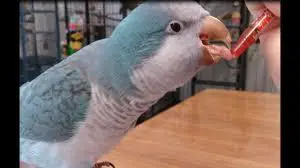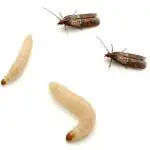While your parrot appears healthy and you try your best to them from getting injured throughout its entire lifetime, it’s realistic to assume that there will come the point that you’ll be medicating your bird for some reason. That’s why proper preparation is important. Yes, it can be quite challenging, not only for you as a pet owner, but most especially for your parrot.
In this post, you’ll learn how to introduce and use a syringe to inject medicine into your parrot.
When Is It Needed to Inject Your Parrot
A bacterial infection could result in antibiotic medication. For instance, if your pet parrot has watery fecal matter for the past couple of days, you have to bring it to the veterinarian. The vet will prescribe the right antibiotics twice a day for about 14 days.
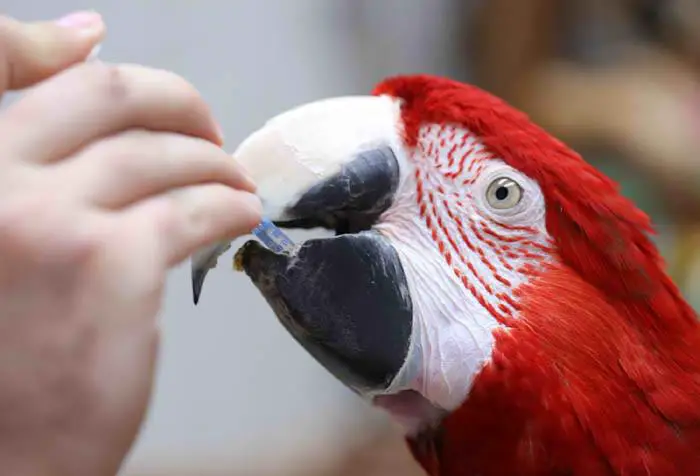
Importance of Bird Syringe Training
You’ll need to draw the medication into a sterile syringe, and give the first dosage to your parrot. However, for first-timers, parrots tend to turn their heads and refuse to open their mouths. Your parrot tries to struggle free and evade every attempt you do to just to capture him.
For the course of antibiotics to be effective, you should give the complete dosage of medication without missing anything. However, when your parrot is jerking, the dosage will be lessened, or your parrot may miss taking the entire dosage. Your parrot will protest as you attempt to depress the plunger. That’s why your parrot should be syringe trained.
How to Inject Medicine to Your Parrot
Train your parrot to accept a syringe for his future medication. In that way, you can deliver fluids orally. It will also avoid hurting your pet caused by using a towel or restraining your parrot. Because your bird is sick, you won’t expect its full cooperation. If you’re too persistent, you might only frighten your parrot and even break the trust and bonding you have established in the past.
Here are some tips and tricks when introducing syringe training or injecting medicine to your pet parrot:
1. Assessment
First and foremost, it’s important to assess your parrot’s body language before a bird syringe training.
2. Gradual Introduction
Slowly introduce the syringe to your pet. You can introduce water first. It’s a great idea to start with because it’s considered an innocuous fluid. It means that no bird can object to it, so it makes your parrot pretty comfortable with the notion that a syringe holds water or something rewarding inside.
3. Move From Water to Juice
From the water, you can introduce juices next, which serve as a reward for your parrot. Of course, if your parrot loves tea, make sure that it’s decaffeinated.
4. Strengthen the Behavior
As your bird gets used to the syringe when drinking different beverages or water, keep serving these drinks this way to reinforce and strengthen the behavior of your parrot. In time, your pet will get used to it, and taking medicine through an oral route using a syringe won’t be a problem anymore.
Proper Position and Delivery of Medicine Using Syringe
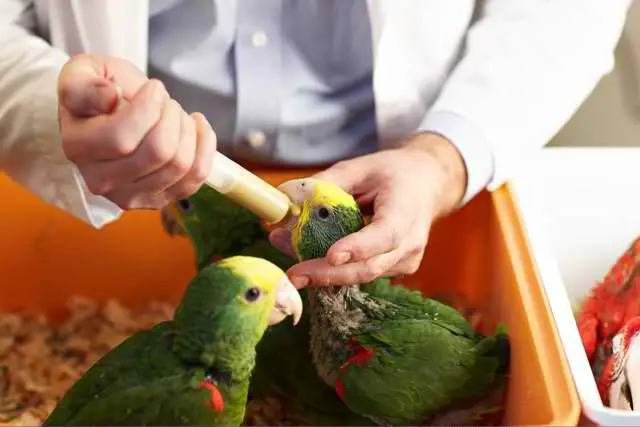
Because of the anatomical structure of your parrot’s mouth, fluids, like oral medications, should be delivered into your pet’s left side of its beak. So that would be your right when you’re facing your pet. Next, aim towards the back of your parrot’s mouth. Never release the medicine directly down your pet’s throat. It will help prevent the danger of choking or aspiration.
Position the syringe properly so that the liquid remains inside your parrot’s mouth. By doing so, you also avoid shooting out the medicine to the other side of its beak that is open. Just like humans, introducing larger portions of food or object into the mouth, like in gastroscopy, can be difficult. That’s why you have to offer syringed medications to your parrot by holding it against your chest. With this position, your pet will feel more comforting. Also, it will enable you to measure the amount of restraint so your parrot won’t feel scared.
For larger parrots, place your hand lightly on its back and neck. It is one way to show affection instead of an act of restraint. Medications are not readily accepted because they taste bitter or different from what they’re used to. If ever your parrot pulls out of its position while you’re administering the medication, simply re-position your pet’s head.
How to Medicate Your Parrot
Medicating your parrot using a medicine syringe can be challenging, most especially if you have not tried it before. Here’s a step by step guide on how to medicate your parrot for the first time.
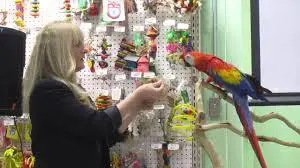
- Set your pet parrot on a table. Carefully grasp your parrot’s neck by holding the part where it joins the mandible or lower jaw.
- Use your other hand to grasp the syringe. Place the tip of the syringe into the left side of your pet’s mouth.
- Next, push the plunger of the syringe to release the medicine. Make sure that the medicine is administered towards the back of the throat.
- Make sure to wipe excess medicine from your pet parrot’s beak. Bring your parrot back in the cage.
- Always try to regain your parrot’s affection. You can do it by spending the rest of the day, giving your pet delicious snacks, treats, and new toys.
How to Medicate a Parrot for Subsequent Applications
- Retrieve your parrot from the cage.
- Next, apply bandages as needed to your hands and arms to prevent being wounded when your parrot struggles.
- Carefully immobilize the head of your parrot to avoid causing injury to your body.
- Try to break the grip and remove the feet of your parrot from your hand.
- Apply a strong analgesic cream and more bandages if you have new wounds, most especially on your hands and arms.
- Wrap your parrot in a towel to immobilize your bird.
- Carefully observe if your parrot struggles. The head and the tail of your parrot can be difficult to handle, causing you injury.
- Hold your parrot snugly.
- Get the syringe and place the tip into the left side of your pet’s mouth.
- Push the plunger of the syringe to release the medicine. Make sure that the medicine is administered towards the back of the throat.
- Make sure to wipe excess medicine from your pet parrot’s beak. Bring your parrot back in the cage. Depress the plunger and squirt the medicine toward the back of the bird’s throat.
- Make sure to attempt regaining your parrot’s affection by spending the rest of the day, giving your pet delicious snacks, treats, and new toys.
Video Source: Youtube
Conclusion
If your parrot learns how to take liquids using a syringe, it will eliminate the fear of the unknown or anxiety. So in times of illness, your parrot can easily take the medication without using restraints. Of course, your pet will take the entire course of the prescribed medication, like antibiotics, keeping your parrot consistently treated to become healthy once again.

